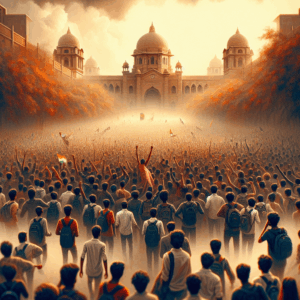
Bharat Bandh has suddenly dominated search trends online, sparking nationwide debates and signaling something much bigger beneath the surface. As millions turn to Google for updates, it’s clear that labor unrest and its impact on India’s economy are on everyone’s minds. This article breaks down why these searches matter—and what they reveal about current events shaping India’s workforce.
Anecdote: Just last week, commuters in Delhi faced hours-long snarls, with businesses shuttered and streets blocked, all because of a spontaneous Bharat Bandh call. Social media buzzed with real-time updates as trending hashtags fueled growing anxieties and drew global attention to India’s labor landscape.
What’s Happening?
Each spike in “Bharat Bandh” searches typically coincides with planned protests, strikes, and labor demonstrations across major cities like Mumbai, Kolkata, and Chennai. Trade unions and farmer groups frequently leverage nationwide shutdowns as bargaining chips, calling for policy reversals on issues like wage security, farm laws, and privatization. With Google Trends reflecting an unprecedented uptick in related searches, it’s evident that broader segments of the population are joining or closely tracking these movements.
Why It Matters
Such search spikes are more than digital blips—they reflect real economic consequences. Increased agitation often disrupts transportation, supply chains, and business operations, leading to potential GDP slowdowns and investor uncertainty. Key industries, from agriculture to manufacturing and retail, feel the immediate pinch, while international observers question India’s stability as a growth engine.
Moreover, the online chatter places added pressure on policymakers, signaling a need for immediate dialogue with labor representatives. These trends also give voice to marginalized workers and highlight their role in shaping national narratives, making “Bharat Bandh” not only a search keyword but an indicator of India’s socio-economic pulse.
What’s Next?
- Policy Announcements: Upcoming budget sessions and labor ministry meetings are expected to respond to fresh demands from unions and agrarian outfits.
- Vote Timelines: With important state assembly elections on the horizon, political parties are recalibrating stance on labor reform to sway public sentiment.
- Stakeholder Reactions: Business chambers advocate for negotiation, while civil society groups are mobilizing support for both labor rights and economic resilience.
Search data suggests another wave of unrest may be brewing—meaning ongoing attention to online trends can provide early warnings for policymakers and businesses alike.
Conclusion
The surge in “Bharat Bandh” searches highlights mounting labor unrest and its significant impact on India’s national economy. As citizens look online for clarity and solutions, understanding these trends is essential for businesses, officials, and voters. Will this digital pulse drive meaningful change, or deepen existing divides? What steps do you think would best address the concerns fueling this unrest?







